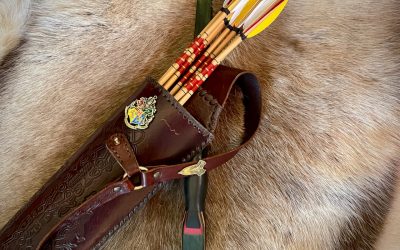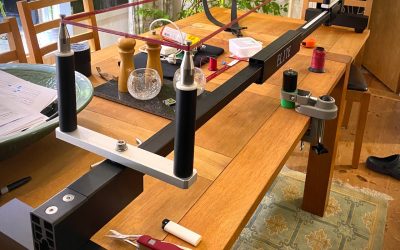When Holless Wilbur Allen patented the compound bow in 1969, he revolutionized archery forever. With its ingenious use of cams and pulleys, the compound bow introduced the concept of let-off—a reduction in the force required to hold the bowstring at full draw—making archery more accessible and efficient. But like any groundbreaking invention, the compound bow didn’t emerge from a vacuum. Its roots, both direct and indirect, trace back through centuries of innovation, mechanical ingenuity, and a relentless quest for efficiency in bow design.
The Birth of the Compound Bow
Allen’s idea stemmed from a simple question: how can we maximize energy storage in a bow while minimising the strain on the archer? By incorporating eccentric cams at the limb tips, Allen created a bow that stored energy more efficiently than traditional designs. This mechanism reduced the physical effort required to hold the string at full draw, giving the archer more time to aim with precision.
His invention was not merely an improvement but a game-changer. By the mid-1970s, manufacturers were scrambling to adopt and refine the design, adding materials like carbon fibre and aluminium alloys. The result? Bows that were lighter, stronger, and faster. The compound bow became the darling of hunters and competitive archers alike.
The Shadow of the Past: Did Earlier Bows Inspire Allen?
Though Allen’s compound bow was unprecedented, the quest for efficiency in archery is ancient. While no earlier bow employed mechanical let-off, historical designs reveal a continuous evolution toward the principles embodied in the compound bow.
Asiatic Composite Bows
Centuries before the compound bow, cultures from Mongolia to Persia used recurved composite bows. These elegantly curved designs stored more energy than straight-limbed bows, offering greater power without increasing size. While they didn’t feature let-off, their efficiency and compactness mirrored the goals of the compound bow.
Training and Crossbows
Medieval archers often trained with lighter bows to avoid fatigue—a rudimentary approach to reducing strain. Meanwhile, crossbows introduced mechanical aids like cranks and pulleys to draw and hold heavy loads. Though not directly related to archery, these ideas of mechanical advantage could have planted seeds for future innovations.
Mechanical Musings Beyond Archery
Allen’s real inspiration likely came from his understanding of broader mechanical systems. Industrial pulleys, eccentric cams in automobile engines, and other engineering marvels provided a template for his innovative thinking. By applying these principles to the timeless craft of archery, he bridged the gap between tradition and technology.
The Compound Bow Today: A Technological Titan
Fast forward to today, and the compound bow is a pinnacle of modern engineering. Manufacturers continue to push the boundaries, introducing:
- Adjustable let-off percentages for more personalised setups.
- Advanced materials like titanium and carbon composites for lightweight durability.
- Smart technology, such as digital sighting aids and performance tracking, hinting at a future where archery embraces the digital age.
The compound bow is no longer just a tool; it’s a symbol of how far human innovation can take even the most ancient of traditions.
The Future of Archery
As the compound bow evolves, it promises to become even more efficient, accurate, and accessible. Imagine bows that adapt dynamically to the archer’s draw style or integrate augmented reality for enhanced sighting. The potential is as limitless as our imagination.
What started with Holless Wilbur Allen’s tinkering in a garage has grown into a revolution that transformed archery from a test of brute strength into a harmonious blend of skill, precision, and technology.
Conclusion: A Bow for the Ages
The compound bow is more than a tool; it’s a bridge between history and modernity. From the recurved tips of Asiatic bows to the pulleys of crossbows, the spirit of innovation has always been a part of archery. Allen didn’t just invent a bow; he reinvented what archery could be, inspiring a future where the bow continues to evolve while remaining rooted in its ancient origins.
So, next time you nock an arrow on your compound bow, take a moment to appreciate its lineage—a history that spans centuries of craftsmanship and one man’s groundbreaking idea. Whether you’re aiming at a target or hunting in the wild, you’re wielding a masterpiece of human ingenuity, built on the shoulders of giants.






0 Comments